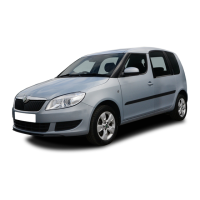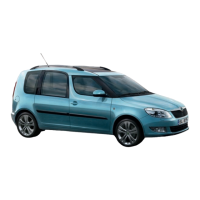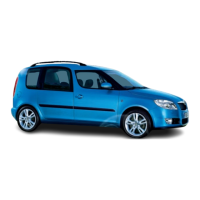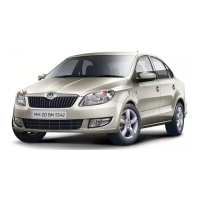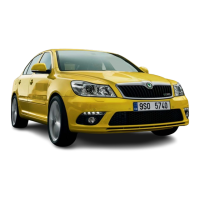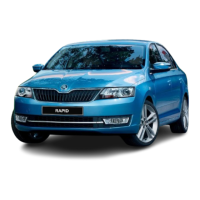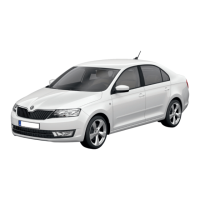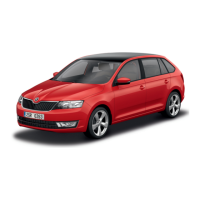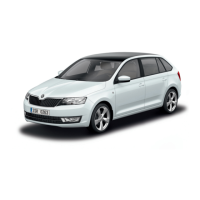Inspecting and Replenishing222
Air bubbles can influence the colour of the “magic eye”. For this reason
carefully knock on the “magic eye” before carrying out the check.
• Green colour - the battery is adequately charged.
• Dark colour - the battery has to be charged
• Colourless or yellow colour - we recommend you have the battery
checked by a Škoda Service Partner.
Batteries, which are more than 5 years old, must be replaced. We recom-
mend you have the electrolyte level inspected and adjusted to the correct
level or the battery replaced if necessary by a Škoda Service Partner.
Caution
If the vehicle has not been driven for more than 3 to 4 weeks, the battery
will discharge because certain electrical components consume electricity
(e.g. control units) also in idle state. You can prevent the discharging of
the battery by disconnecting the negative terminal or charging the battery
constantly with a very low charging current. Please also refer to the notes
when working on the battery ⇒ page 220, “Working on the battery”.
Inspecting the electrolyte level
The battery is practically maintenance-free under normal operating
conditions. We do, however, recommend that you have the electrolyte
level inspected from time to time by a Škoda Service Partner when outside
temperatures are high or when driving on long trips. You should also
check the electrolyte level ⇒ page 222 each time the battery is charged.
The battery acid level will also be checked as part of the Inspection
Service.
Operation in winter
The battery has to provide greater amounts of electricity during the winter.
It also has only part of the initial power output at low temperatures that it
has at normal temperatures.
A discharged battery may already freeze at temperatures just below
0°C.
We therefore recommend that you have the battery checked by a Škoda
Service Partner before the start of the winter, and recharged if
necessary.
Charging the battery
A properly charged battery is essential for reliably starting
the engine.
– Read the warning notes ⇒ in “Working on the battery” on
page 220 and ⇒ .
– Switch the ignition and all electrical components off.
– Only for “quick-charging”: Disconnect both battery cables (first
of all “negative”, then “positive”).
– Carefully attach the terminal clamps of the charger to the
battery terminals (red = “positive”, black = “negative”).
– You can now plug the mains cable of the charger into the
power socket and switch on the charger.
– When charging is completed: switch the charger off and
unplug the mains cable from the power socket.
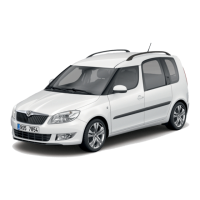
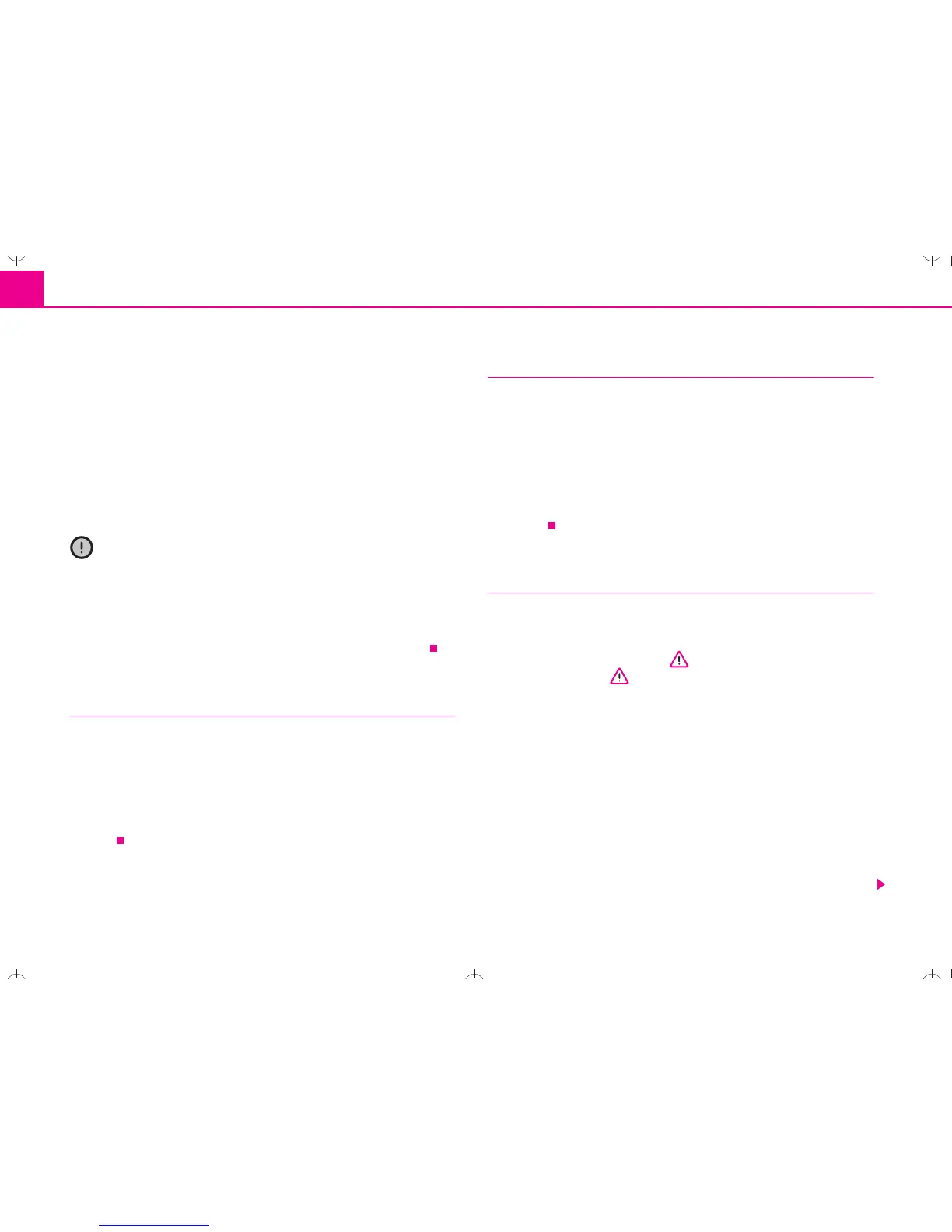